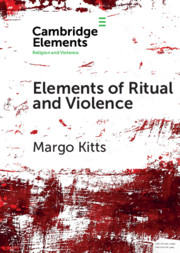Element contents
Elements of Ritual and Violence
Published online by Cambridge University Press: 10 August 2018
Summary
- Type
- Element
- Information
- Online ISBN: 9781108692236Publisher: Cambridge University PressPrint publication: 26 July 2018
Bibliography
Works Cited
- 7
- Cited by

